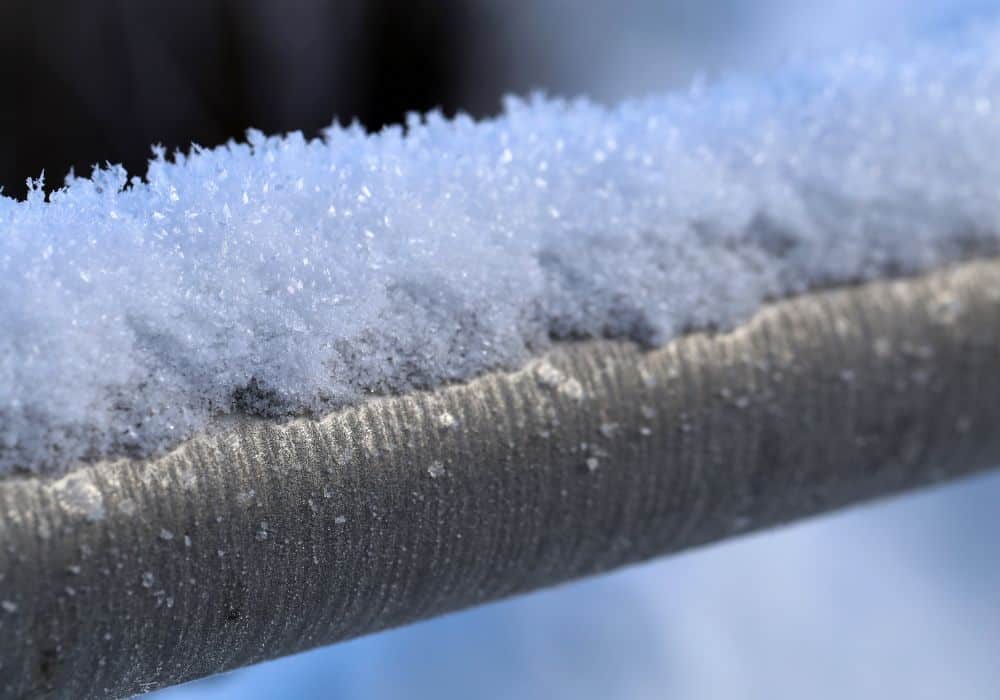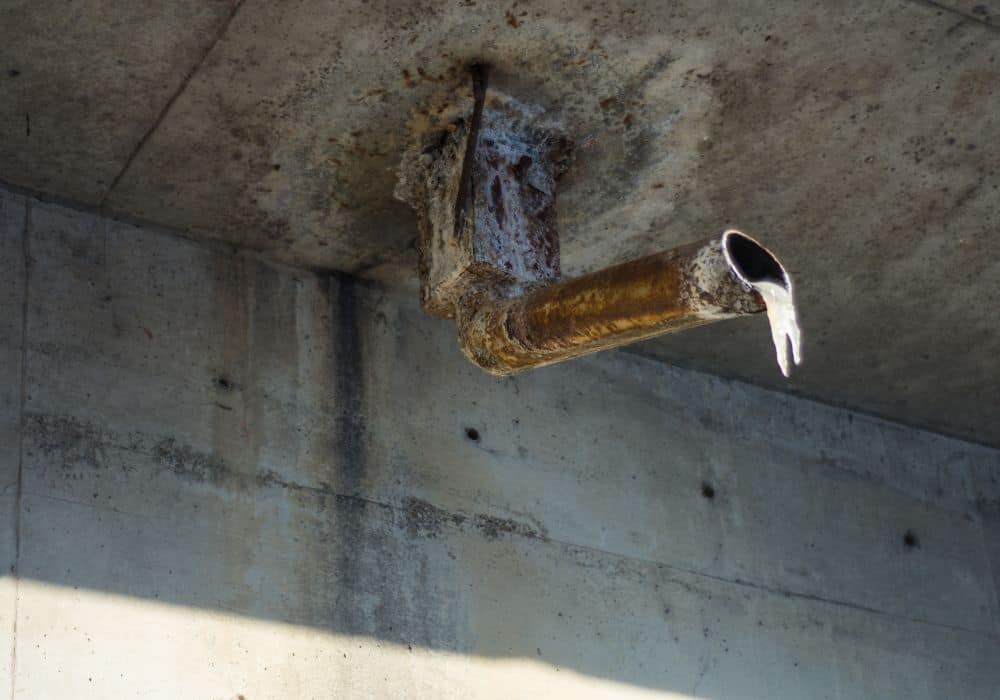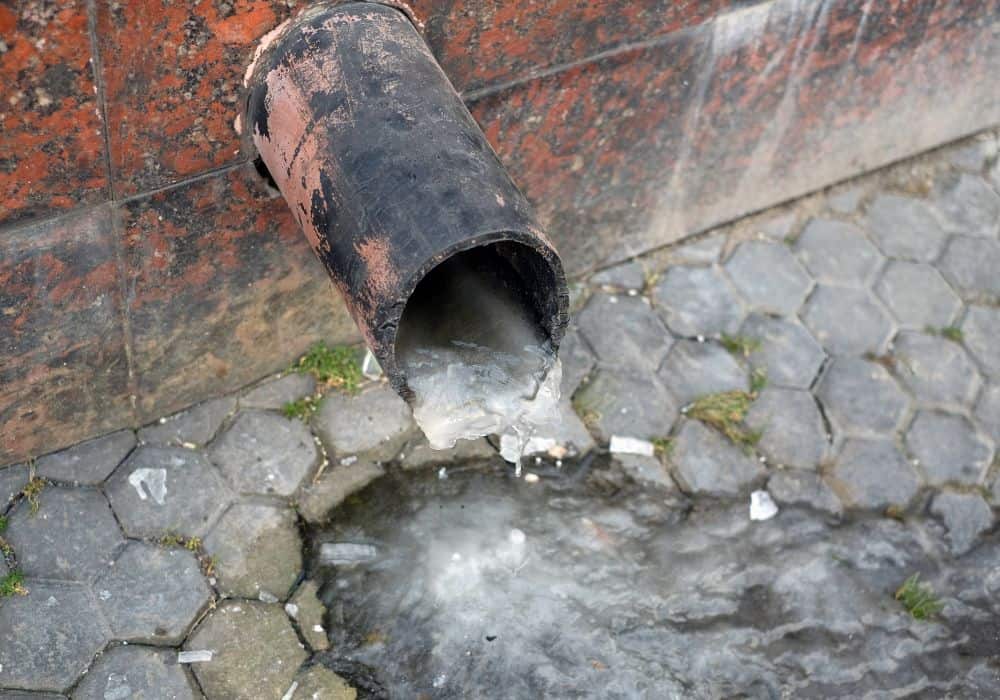If your home is like most, your pipes are hidden behind walls, in crawl spaces, or in the attic. So, when a pipe bursts due to freezing, you may not know where the problem is. And that can make finding and repairing a frozen pipe difficult and costly.
However, some telltale signs can help you locate a frozen pipe. And once you find it, there are steps you can take to thaw the pipe and get your water flowing again.
What Causes Frozen Pipes?
The main cause of frozen pipes is cold temperatures. When water freezes, it expands and puts pressure on whatever contains it. Enough pressure can cause the pipe to burst, leaving you with a costly repair bill and extensive damage to your home.
Another cause of frozen pipes is a sudden drop in water pressure. This can happen when the main water line breaks or when too much water is used simultaneously, causing the water pressure to drop. When this happens, it can cause the water in pipes to freeze more quickly.
Frozen pipes are most common in homes that have inadequate insulation. It can be due to the following reasons:
- The new home and the builder did not properly insulate the plumbing during construction.
- The home is older, and the insulation has degraded over time, leaving gaps that allow cold air to seep in and freeze the pipes.
Pipes susceptible to freezing include:
- Outside your home, such as a water line running to an outdoor spigot.
- In crawl spaces or basements with little or no insulation.
- Against exterior walls that get little sunlight and therefore stay colder than other areas of your home.
Signs Of A Frozen Pipe

The first step in finding a frozen pipe is to look for signs of freezing. Here are some common indications that a pipe has frozen:
- Water pressure drops suddenly, or the water flow slows to a trickle.
- Strange noises come from the pipes, such as gurgling, banging, or popping.
- Frost on exposed pipes or the floor near baseboards
- A musty smell coming from the tap
If you suspect a pipe has frozen, but you’re not sure, try turning on the faucet. The pipe is likely frozen if no water comes out or only a small trickle.
How To Find Frozen Pipe
Each year, frozen pipes cause millions of dollars in water damage repairs.
The first step in preventing frozen pipes is to know where they are located. The second step is to take action to prevent them from freezing.
Here’s a step-by-step guide on how to find a frozen pipe and thaw it out safely.
Step 1: Locate The Frozen Pipe
The first step is to find the frozen pipe. This can be a little tricky if you don’t know where all your pipes are.
If you have an outdoor faucet that isn’t working, the pipe feeding it is frozen. Follow the water line from the faucet back to where it enters your home. This is probably where the frozen pipe is located.
If you don’t have an outdoor faucet, or if all your faucets are working but you suspect a frozen pipe somewhere, start by checking all the exposed pipes in your home. These are the pipes that run along the exterior walls of your house.
The frozen pipe is probably hidden behind a wall if you can’t find it. For this, you’ll need to shut off the home’s main water valve. This is usually located where the water line enters your house.
Once you’ve found the main shut-off valve, turn it off and turn on all the faucets in your home. This will help you determine which pipes are frozen and which ones are still working.
All the pipes in your home are frozen if no water comes from the faucets. If some water comes out of the faucets, then there is at least one pipe that is not frozen.
Step 2: Thaw The Frozen Pipe

Once you’ve located the frozen water pipe, it’s time to thaw it. You can do this with a hair dryer or by wrapping it with a heating pad, towel, or electric blanket.
An open flame however can cause the pipe to burst.
If you’re using a hairdryer, start pointing it at the joint where the pipe meets the faucet. Then, work your way down the pipe, moving the hairdryer back and forth as you go.
If you’re using an electric heating pad or electric blanket, wrap it around the pipe and plug it in. Then, wait for the ice to melt. It usually takes 30 minutes to an hour for the ice to melt.
Step 3: Fix The Frozen Pipe
Once the ice has melted, you need to fix the problem that caused the pipe to freeze in the first place. The pipe froze because it wasn’t properly insulated, so you’ll need to add more insulation. You can do this with pipe insulation from your local hardware store.
If the reason the pipe froze was due to a leak, then you must fix the leak and insulate the pipe. You might need to call a plumber for this.
Lastly, if the pipe freezes because of a power outage, you’ll have to wait for the power to come back on. After it does, turn on your faucets to see if they’re working. If not, follow steps 2 and 3 again.
Step 4: Turn The Water Back On
Restart the water once you’ve fixed the problem.
Start by turning on the main shut-off valve for your home. Then, turn on each individual faucet in your home until the water starts flowing again.
If you have a frozen pipe, don’t panic! Just follow these steps, and you’ll have the problem fixed quickly.
How To Prevent Future Problems
Homeowners can take several steps to prevent frozen pipes, such as:
1. Install Insulation
Install insulation around any exposed pipes — this includes both cold and hot water pipes as well as drain lines. Exposed drain pipes are most likely to freeze during a cold snap, so take measures to protect them now.
Just make sure that you measure the pipe’s circumference before buying the insulation so that it will fit properly.
You can purchase foam pipe insulation at most hardware stores; simply cut it to size and slip it over the pipe.
2. Keep Your Home Warm
During a cold snap, it’s important to keep your home heated to at least 55 degrees Fahrenheit, even if you’re away for an extended period. This will help protect your pipes from freezing.
If you’re going to be gone for more than a day or two, have someone check on your home periodically to ensure the heat is still on and that there are no frozen pipes.
Set your thermostat to the same temperature throughout the day. You may pay more for heating by not using lower nighttime temperatures, but you can avoid costly repairs caused by frozen and burst water pipes.
3. Let Faucets Drip
When the temperatures outside dip below freezing, let your faucets drip slightly. Running water is less likely to freeze than still water, so this will help reduce the risk of frozen pipes. Just open the taps slightly, releasing a small stream of water.
4. Seal Leaks And Cracks
Another way to prevent your pipes from freezing is to seal any cracks or leaks around them. Even a tiny crack can let in enough cold air to cause the pipe to freeze. Inspect your pipes carefully, inside and outside your home, for any cracks or leaks.
If you find any, seal them with caulking or heat tape.
5. Keep Cabinet Doors Open

Keep the doors open during a cold snap if you have pipes in your kitchen or bathroom cabinets. This will allow warm air to circulate the pipes and prevent them from freezing.
Disconnect garden hoses and, if possible, use an indoor shut-off valve to turn off the water to outdoor spigots. Be sure to drain the remaining water from the spigot and hose.
6. Use Space Heaters
If you’re worried about frozen pipes, you can use space heaters to keep them warm. Just be sure to place the space heater on a level surface. You should also unplug the space heater when you’re not home to avoid the risk of fire.
7. Remember Main Water Shut-Off Valve Location
Know the main water shut-off valve and how to turn it off. In the event of a major leak, you’ll want to be able to turn off your water to minimize flooding and damage quickly.
8. Plumbing System Professionally Winterized
If you live in an area that experiences especially cold winters, consider having your plumbing system professionally winterized before the first frost hits. This involves adding an antifreeze solution to all plumbing fixtures in your home and turning off the water supply to any exterior faucets.
Following these tips should help you avoid frozen pipes in the future. But if you do find yourself with a frozen pipe, don’t hesitate to call a professional plumber for assistance.
Final Thoughts
If you have frozen pipes, it is important to take action quickly to prevent damage to your home. Use the tips and tricks outlined in this article to help locate a frozen pipe so you can thaw it out and get your water flowing again.
And remember, always call a professional for assistance if you are unsure or have questions.
